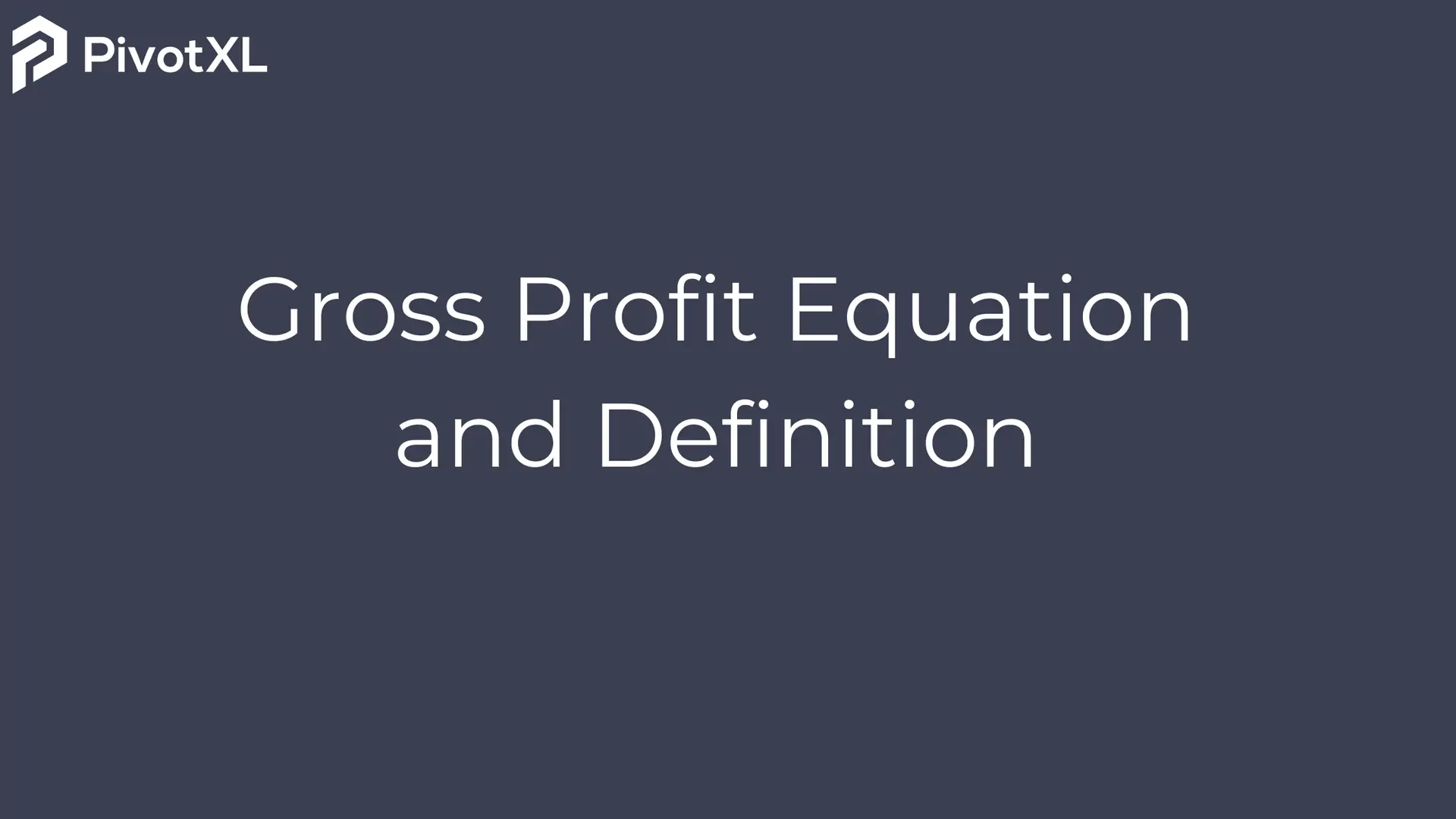What is gross profit?
Gross profit represents the amount a company retains after deducting the cost of goods sold (COGS) from its total revenue. It measures a company’s financial health by showing how efficiently it sells goods or service
The equation for gross profit is a simple subtraction: Total revenue minus COGS. This equation helps businesses understand their production and distribution costs and assess profitability.
Unlike net profit, which accounts for all business expenses, gross profit focuses solely on the direct costs associated with producing goods or services.
What is included in gross profit?
To calculate gross profits, you need to know what to include, which depends heavily on your industry.
Gross profit focuses on the revenue directly tied to the sale of goods or services. That is fairly easy to understand. Every time you strike a deal, your profit goes into the equation.
However, the cost of goods sold is more difficult to pinpoint. COGS covers all costs directly associated with the production of a product, such as raw materials, labor, and manufacturing expenses.
Operating expenses like rent, utilities, administrative costs, and other costs that aren’t directly linked to the production process should not be included in COGS—and are therefore left out of the gross profit calculation. These expenses fall under operating costs and are deducted further down the income statement to determine net profit.
Why Gross Profit is Important for Finance Teams to Measure and Understand
Gross profit is one of the most important finance statistics for any business because it lays the foundation for strategic finance analysis and decision-making. By measuring and understanding gross profit, you can:
1. Analyze Your Company’s Fiscal Performance
Gross profit analysis shows how well a company generates income relative to production costs. Without control of production costs, even the highest-revenue companies are unsustainable. A gross profit report can serve as an early warning sign to tighten the purse strings.
By tracking gross profit over time, businesses can assess whether their strategies are effective. A steady or improving gross profit margin suggests a healthy balance between production costs and revenue, while a declining margin may signal inefficiencies, rising costs, or the need for pricing adjustments.
2. Develop Effective Pricing and Cost Management Strategies
Ongoing profitability analysis keeps you updated on your performance. This can be a springboard for developing strategic pricing models that maximize profitability without becoming less competitive. By understanding the cost of goods sold and how it affects gross profit, businesses can adjust pricing to cover costs and ensure a healthy margin.
Additionally, this analysis helps identify areas where cost reductions are possible, such as negotiating better terms with suppliers or optimizing production processes. When leveraged effectively, the gross profit equation can strike the balance between competitive pricing and cost management—the cornerstone of sustainable growth.
3. Discover the Link Between Gross Profit and Total Profitability
Gross profit is an important component of a company’s overall profitability, serving as a starting point for calculating first earnings before interest and taxes (EBIT), then net profit. While gross profit focuses on direct production costs, total profitability or net profit encompasses all expenses, including operating costs, taxes, and interest.
A strong gross profit margin can indicate that a company’s core operations are sound, but to achieve total profitability, you also need to manage indirect expenses. However, a healthy gross profit margin sets a solid foundation for greater net profits and long-term financial success.
The Equation for Gross Profit
The formula to calculate gross profit is:
Gross Profit = Net Revenue − Cost of Goods Sold
Key Elements of the Gross Profit Formula
To use the formula correctly, you’ll need two key pieces of information: your total revenue and the cost of goods sold.
- Total revenue includes all income generated from the sale of goods or services during a specific period, net of any discounts, returns, or allowances.
- COGS (Cost of Goods Sold) includes:
- Direct materials: Costs of raw materials or components.
- Direct labor: Wages or salaries of employees directly involved in production.
- Manufacturing overheads: Factory utilities, equipment depreciation, etc.
Additionally, internal accounting policies, such as FIFO or LIFO methods, and external market conditions like inflation, can impact gross profit.
Converting Gross Profit into a Gross Margin
Gross profit as a standalone metric may not provide a complete picture of a company’s financial performance. However, converting it into a percentage, known as gross margin, enables meaningful comparisons.
Gross Margin (%) = (Gross Profit / Revenue) x 100
Gross margin represents the percentage of revenue remaining after subtracting COGS. This allows companies to benchmark their profitability against peers or industry standards.
An Example of Gross Profit Calculation
Let’s consider an example of a fictitious company, Dani’s Apparel, which sells clothing and accessories.
- Revenue: $500,000 (clothing) + $200,000 (accessories) = $700,000
- COGS: $300,000 (clothing) + $100,000 (accessories) = $400,000
Gross Profit = $700,000 − $400,000 = $300,000
Gross Margin (%) = ($300,000 / $700,000) x 100 = 42.9%
Mistakes to Avoid When Calculating Gross Profit
Avoid these common pitfalls:
- Misclassifying expenses: Only direct production costs belong in COGS.
- Ignoring inventory changes: Account for changes in inventory levels.
- Relying on manual calculations: Use tools like PivotXL to reduce errors and save time.
- Overlooking segment analysis: Analyze gross profit by segment to identify your most profitable areas.
Streamline Gross Profit Calculations with PivotXL
Gross profit is a key indicator of your company’s core financial performance, but the calculation process can be cumbersome. From categorizing COGS to analyzing discrepancies, the process can feel daunting.
Thankfully, PivotXL simplifies gross profit calculations, offering real-time financial visibility and connecting all your financial processes on one dashboard. With PivotXL, you can prepare financial statements instantly and analyze gross profit across various timeframes and business segments with ease.
Let PivotXL help you turn your gross profit analysis into actionable insights for sustainable growth!




